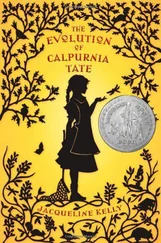These factors and a number of others that we have not space to mention here led to a situation where increasing proportions of the national income were going to those persons in the community who would be likely to save and decreasing proportions were going to those persons in the community who would spend their incomes for consumers' goods. This situation could continue as long as all the savings made by the former group were invested in new capital or otherwise spent, because these actions would distribute such savings to persons who would use their incomes to buy goods. Only under these conditions (that all savings be invested or spent) could all goods produced be sold.
The last statement can be expressed in a simple arithmetical relationship. In any single firm the total selling price of the goods produced is equal to the sum of their costs of production and their profits. In the economic community as a whole the aggregation of the selling prices of all firms will be the sum of aggregate costs plus aggregate profits. The incomes of the community as a whole are the same as the aggregate of the selling prices of all goods because the profits and costs of each firm are the incomes of those to whom they are paid. If savings are held back from these incomes, the purchasing power available to purchase the goods being offered for sale will be reduced below the prices being asked. Thus:
Total prices = total costs + profits Total incomes = total costs + profits
therefore
Total prices = total incomes
But
available purchasing power = incomes — savings + investment.
Accordingly, the purchasing power available to buy the goods being offered at the prices being asked will be inadequate unless all savings are invested.
During the world depression of 1929-38 all savings were not invested because there was no point in spending money on new capital plant so long as the goods being produced by the existing capital plant were going unsold because of the inequitable flow of incomes into the control of persons who wished to save rather than into the control of those who wished to consume.
This crisis of the system was intensified by a number of other factors, notably the deflationary influence of a monetary system tied to a limited supply of gold under conditions of power production of goods. As a consequence, the crisis was accompanied by a drastic price deflation that eventually led to a banking crisis and the end of the international gold standard. The date of this last event could be fixed at September 21, 1931, when sterling, which had been the center of the whole world's financial network for more than a century, went off gold. Succinctly, the banking crisis arose when prices of goods fell so low that the banks could not liquidate collateral fast enough and at high-enough prices to provide sufficient funds to meet the demands made on their reserves. As confidence in the banking system decreased, demands rose, reserves fell, and the liquidation of collateral could not keep up with either. Accordingly, banks could not fulfill their obligations and had to close their doors, go bankrupt, or call upon governments for help. The net result was the end of financial capitalism.
This shift from financial capitalism to monopoly capitalism was made possible by the very means that bankers developed for their control of business firms. As we have seen, business firms came to bankers to obtain capital and were bound to remain under banking influence as long as their need for outside capital continued. To ensure continued banking control of these firms, bankers used such mechanisms as interlocking directorships, holding companies, consolidations, and controlled banking services. But these methods of banking control, by reducing competition between firms, made it possible to seek profits by raising prices rather than by decreasing costs and thus made it possible for such firms to become self-financing of their own capital needs and, accordingly, to be freed from banking control. In the earlier period a firm could not seek profits by raising prices because both competition with other firms and the limited supply of money anchored to the limited supply of gold made it difficult to raise prices of any individual product. Accordingly, profits (which are the margin between prices and cost) had to be sought by reducing costs. This need, incidentally, placed the interest of labor in opposition to management, since wages formed the chief item in costs. Management thus, in the periods of industrial capitalism and in the following period of financial capitalism, was almost inevitably opposed to the unionization of labor. But once financial capitalism had brought considerable elements of monopoly into the picture (as J. P. Morgan did when he organized the United States Steel Corporation), decreased competition made it possible to increase profits by raising prices faster than costs. This made it possible for firms to become self-financing out of their own profits, to dispense with bankers' flotations and biased advice, and to reduce management's opposition to unionization of labor. As industry became more heavily capitalized, wages became a decreasing portion of costs, and the value of uninterrupted use of the expensive capital plant made it advisable to avoid labor disputes and labor stoppages by allowing unionization of labor and higher wages, recovering the increased costs of higher wages by raising the increasingly noncompetitive prices of the products. Thus highly capitalized monopolistic industry became an exploitation of the absent consumer by management and labor jointly. At approximately the same time, the end of the international gold standard freed the supply of money from its dependence on the limited supply of gold (and from the maldistribution of gold arising from the bankers' mismanagement of the gold standard) and thus made it possible for prices to be raised, perhaps indefinitely by joint labor-management actions. And finally, in the same context of events, the pressure to raise wages was increased by the desire to provide increased purchasing power to buy the growing flood of goods being produced.
The shift from financial capitalism to monopoly capitalism made possible a new period of expansion in Western civilization, but before that new mechanism could be used for expansive purposes the institutionalization of the previous organization of financial capitalism had thrown the whole society into an Age of Conflict. It is not yet clear if the society will be destroyed as a consequence of this or if it will be able to straighten itself on a new course of expansion. The structure of the new system is entirely differentfrom that which existed in the period of financial capitalism before 1929.
In that earlier period the two chief differences were (1) that the whole economic system was dominated by bankers and financiers, especially by investment bankers, and (2) that, as a result, the system had a financial mechanism that was basically deflationary because the volume of money was determined, in the final analysis, by the limited supply of gold. As a consequence of the first of these characteristics, the lines of prestige and influence in the system passed from financiers to heavy industry and then to light industry and commerce, after which they were diffused among petty bourgeois clerks, farmers, laborers, bureaucrats, and service workers. As a consequence of the world depression, finance was reduced to a subordinate role and a struggle arose about the arrangement of the other groups. In fascist states, industry, commerce, and petty bourgeois, by abolishing any forms of political democracy, sought to establish authoritarian regimes in which industry with its allies could exploit farmers, laborers, and consumers in general in order to favor producers in general. In "New Deal" and democratic states this did not occur, but instead labor, farmers, commercial groups, and to some extent consumers in general were strengthened and all groups (including reduced finance) became satellites around the governmental system. The control of money supply, which had been one of the chief attributes of the banking group before 1929, became an attribute of the government after 1945, and the government exercised its control under pressure from the shifting alliances and alignments of the great economic power blocs that surrounded it. These blocs came to include:( 1) finance, (2) heavy industry, (3) light industry, (4) commercial and service groups (such as real estate), (5) civil servants, (6) the armed services, (7) labor, (8) farmers, (9) transportation, and others. If any one or several of these blocs become too obviously exploitative of the others, the others form an alignment to pressurize the government in another direction. The chief consequence of such alignments and pressures has been to increase government spending and thus to increase inflation. In general, all these pressures have sought to achieve some redistribution of economic resources among the three chief claimants to these resources; these three are consumption, capital accumulation, and government services (including defense). In the financial capitalist system before 1929, the great danger had been the great diversion of resources toward capital accumulation to the jeopardy of the two others. In the new pluralistic system that has arisen, the great danger in many countries has been toward increasing consumption to the jeopardy of capital accumulation and public service. This danger has frequently appeared as a tendency toward inflation that would destroy capital accumulation by destroying savings.
Читать дальше










